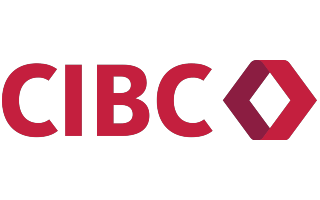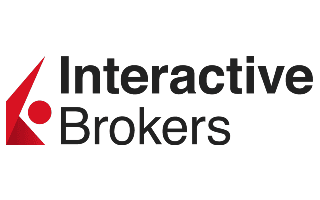The name of the game when investing in your 30s is flexibility. Those with established portfolios will want to sit down to consolidate old accounts and reassess fees. And newbies: it’s time to start building out some short- and long-term savings goals.
How to start investing in your 20s: 7 tips for beginners
1. Establish debt and savings plans
Investments can help guide and support your financial goals but shouldn’t be taken on at the expense of existing financial responsibilities. Make time to regularly assess your finances to identify opportunities to build your savings and eliminate debt. High-interest debt, like credit card debt, should be prioritized over low-interest or tax-deductible debt, like your mortgage.
You don’t need to be debt-free to build your investments — but knowing how to allocate funds optically can empower your financial success. If you haven’t established a solid debt or savings plan yet, now’s the time.
How much should you have saved by 30?
Some financial advisers suggest having the equivalent of your annual salary saved by the time you turn 30. Others argue that this estimate is too high and that even having scraped together half of your annual salary in savings puts you well on your way towards saving for retirement.
If you haven’t started budgeting for retirement yet — don’t panic. You have plenty of time to start. And if you’re looking for a solid jumping-off point, consider focusing on an emergency fund capable of covering three to six months of living expenses. Once you’ve established an emergency fund, look for opportunities in your budget to expand your margins and grow your savings goals.
2. Revisit existing investments
Already got a few investments accounts to your name? You’ll want to consolidate what you have before you begin branching out into new investment classes. For example, if you had an RRSP with a past employer, you’ll want to explore your RRSP conversion options. Or, if you’ve got some old mutual funds with your bank, consider cashing them out to pool your funds for a self-directed brokerage account.
Finder survey: What type of investor do Canadians of different ages identify as?
Response | Gen Z | Gen Y | Gen X | Baby Boomers |
|---|---|---|---|---|
| Long-term investor | 21.76% | 31.71% | 32.51% | 35.66% |
| I do not have money invested | 20.92% | 28.29% | 24.73% | 34.88% |
| Not sure | 11.3% | 15.43% | 13.43% | 13.18% |
| Active (Day Trader) | 10.46% | 4.29% | 3.53% | 0.78% |
| Dividend investor | 10.04% | 4.86% | 6.36% | 3.1% |
| ETF investor | 9.21% | 5.71% | 6.01% | 2.33% |
| Value investor | 9.21% | 4.57% | 5.65% | 6.98% |
| I use the dollar cost average approach | 7.11% | 5.14% | 7.77% | 3.1% |
3. Max out your retirement accounts
If you hold an RRSP or TFSA, consider maximizing your contributions to get the biggest tax-advantaged bang for your buck.
Registered retirement savings plan (RRSP)
RRSPs are a good first step to saving up for your retirement, especially if you won’t need to access your savings anytime soon. One of best benefits of using an RRSP is that you can deduct the amount you contribute to it each year from your taxes. Unfortunately if you withdrawal from is that you’ll be taxed heavily on withdrawals you make earlier than anticipated. This type of investment is a particularly good fit for high-income earners.
Tax-free savings account (TFSA)
With a TFSA you can save money over the long run, but still have access to it in an emergency. The biggest benefit of using a TFSA is that you can take your money out whenever you want without being penalized. The downside is that you won’t be able to claim any money you contribute to your TFSA as a tax deduction. TFSAs are best suited for people who are in a lower tax bracket or don’t have very much money to invest.
TFSA vs RRSP: Which investment is better?
What if you haven’t started investing yet?
Feel like you’re late to the investing game? Don’t sweat it. It’s never too late to get started, and there are plenty of options for 30- and 40-somethings exploring investments for the first time.
To get the ball rolling as a late bloomer, start investigating your retirement account options. The tax advantages of these accounts can’t be understated and can have a big impact on your retirement distributions. Outside retirement accounts, explore budgeting apps to identify opportunities to cut costs and ramp up your savings. You may be able to make up for lost time by doubling down on your efforts to build a nest egg.
4. Make sure your brokerage account still fits
Once you’re in your 30s, you may want to circle back to your existing brokerage account — if you have one. Trading fees and research offerings have changed drastically over the past 5 years as new brokers opened up shop and existing brokers scrambled to compete.
Revisit your existing investments and compare your platform’s fees and features with the top brokers on the market. Consider the following as you review competing brokers.
- Fees. Some platforms offer commission-free trades. But be on the lookout for fees when trading derivatives and mutual funds.
- Available securities. Are you keen to add some fresh asset classes to your portfolio? Maybe you plan to branch out into more niche investments, like forex or crypto. If your current platform can’t cater to your trading goals, review what other platforms have on tap.
- Learning curve. Some platforms, like Wealthsimple, were designed with the beginner investor in mind. Others, like Interactive Brokers, are tough for newbies to navigate.
- Research tools. Experienced traders rely on sophisticated research tools to help inform their trades. If you anticipate making numerous trades, opt for a platform with powerful charting tools, like Scotia iTRADE.
- Customer support. If you’re new to trading, you may want to opt for a platform that offers robust, highly-rated customer service, like Qtrade Direct Investing.
The right platform for your portfolio depends on your long-term financial goals and how hands-on you’d like to be with your investments. And keep in mind that if you plan to jump ship, your broker may charge you an account transfer fee.
Compare stock trading platforms
As you navigate investing in your 30s, consider adding stocks to the mix. Trading platforms make it easier than ever, but do your homework and choose the best platform for your needs.
Finder Score for stock trading platforms
To make comparing even easier we came up with the Finder Score. Trading costs, account fees and features across 10+ stock trading platforms and apps are all weighted and scaled to produce a score out of 10. The higher the score the better the platform - simple.
5. Adjust your asset allocation
Think of your asset allocation strategy as a living, breathing entity. It should never remain static and should be reevaluated multiple times over the course of your investing journey.
The longer your time horizon, the more risk you can afford to take. That said, the asset allocation strategy of a 30-year-old will look different than that of a 20-year-old. If you started investing in your 20s, now is the time to reassess your asset allocation. (If you didn’t start in your 20s, you might also take a look at the information in “How to start investing in your 20s: 7 tips for beginners.”)
Advisers encourage 30-somethings to split their funds between high-growth securities, like stocks, and safer, more consistent securities, like bonds. The right balance depends on your risk tolerance, but you’ll want to aim for something in the neighborhood of 75% to 80% high-growth assets and 20% to 25% conservative assets.
6. Explore real estate investments
When it comes to investments, diversification is always the name of the game. A handful of stocks, bonds and funds is pretty standard fare for most investors. But as you age, you may want to consider branching out into more unique asset classes, like real estate.
An investment in real estate can take many forms, and the right pick for your portfolio depends on how hands-on of an investor you want to be.
- Mutual funds. Real estate mutual funds are accessible, liquid and fairly low commitment — at least as far as real estate investments go. They can be traded through a self-directed brokerage account.
- REITs. Real estate investment trusts allow investors to back companies that buy and operate income properties, like office buildings, hotels and apartment complexes. REITs trade on major exchanges and are also accessible through a self-directed brokerage account.
- Crowdfunding. Crowdfunding platforms connect investors with real estate development projects. You can invest in a real estate project through debt or equity and typically receive monthly or quarterly distributions for the term of the investment. Consider popular platforms like Fundrise.
- RELPs. Real estate limited partnerships help investors finance real estate projects managed by real estate development firms or property managers. To invest, you must find a real estate development firm accepting investors. If accepted, you become a limited partner with a partial ownership stake in the property.
- REIGs. Real estate investment groups open the door for investors to purchase one or more property units across a set of buildings — usually apartment complexes. The REIG operates the units on your behalf and is responsible for managing tenants, but your name is on the lease. You pay a portion of your owed rent to the REIG to cover maintenance costs.
- Rental properties. If you want full control over your investment, consider purchasing property and becoming a landlord. You’ll be responsible for the mortgage, property taxes, building maintenance and any dilemmas that arise with tenants. But you’ll generate rental income, and many properties appreciate in value over time.
7. Revamp your financial goals
Over the past decade, it’s quite likely that your financial circumstances have changed. Investing at 30 will look different than investing at 20 because you likely have more on your plate: more capital, more debt, more expenses — just, more. Maybe you bought a house. Maybe you got married, started a business, had children — the exact circumstances aren’t as important as taking the time to sit down and address what’s changed.
Don’t be afraid to scale your financial objectives in response to major life events. There’s something to be said for committing to your goals, but plowing heedlessly forward in the face of life-changing news may not be wise — or realistic.
Sit down with someone you trust, whether it be a friend, partner, family member or financial adviser, to reassess your short- and long-term financial goals.
8. Monitor your investments
Stay on top of your portfolio’s performance by regularly reviewing your investments. The frequency with which you revisit your portfolio depends on your trading strategy.
Active investors who execute frequent trades may want to check in once per week — or even once per day if monitoring volatile stocks. Passive investors that rely on robo-advisors or portfolio managers may not need to maintain the same level of vigilance. Even checking in once per quarter should suffice.
But be warned: over-monitoring your accounts can be problematic. Financial experts suggest that too-frequent checking can lead to loss-inducing impulse trades.
Bottom line
Whether you’re new to investing or have an existing portfolio, there are numerous steps you can take to streamline your financial goals and strengthen your returns. Review your investment options to keep your portfolio fresh, flexible and resilient.
Frequently asked questions
More guides on Finder
-
How to trade futures
Futures trading can be rewarding, but it’s not for everyone. Learn the steps to trade futures, including examples and fees to consider.
-
Investment calculator
Use this calculator to find out how much you can grow your money.
-
Investing in your 40s: 8 ways to prepare for retirement
How to invest for retirement: 8 ways to safeguard your portfolio.
-
6 places to find investment advice
Tips for beginning investors and high net-worth individuals alike.
-
Retirement planning
Get actionable tips on how to prepare for your ideal retirement.
-
How to start investing in your 20s: The 7 tips for beginners
Read our 7 tips for starting a portfolio if you’re new to investing.
-
Real estate investment
Check out these real estate investment options from REITs and rentals to mutual funds, house flipping and more.
-
Questwealth Portfolios vs Wealthsimple: Which robo-advisor is right for you?
Find out which of these popular Canadian robo-advisors you should choose to for your financial situation.
-
What are bonds?
Bonds are fixed-income assets that earn interest. But bonds may underperform other asset classes in the long run.



